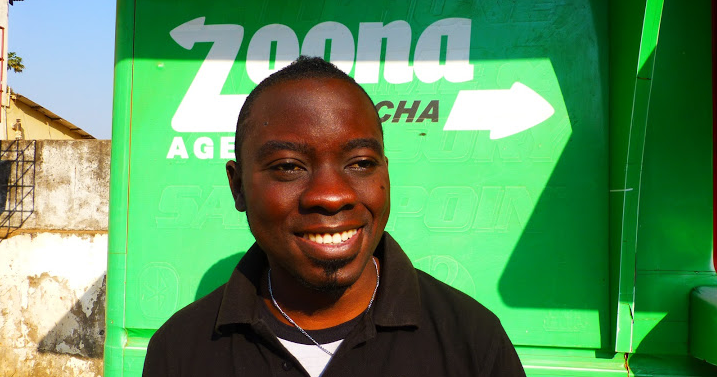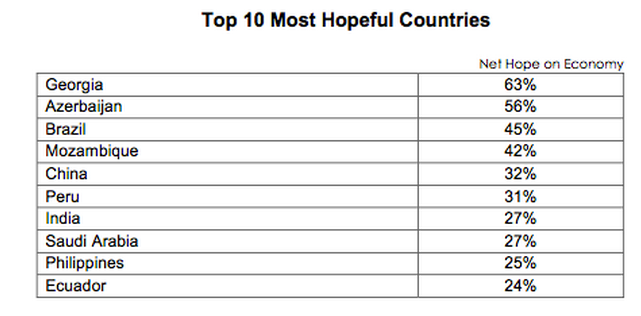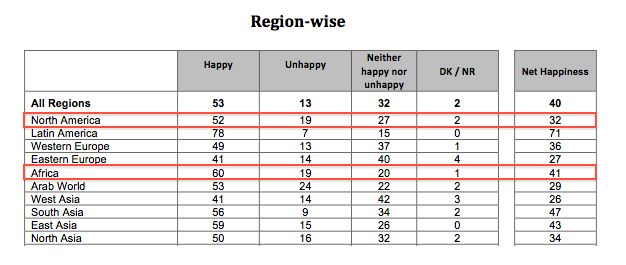
Every year on New Year’s Eve, the WIN/Gallup International Association publishes The Global Barometer of Hope and Happiness. This survey has been conducted every year since 1977, and last year, a total of 55,817 people were interviewed in 54 countries.
The Global Barometer of Hope and Happiness measures exactly what it says it does: people’s overall opinion on economic prospects, as well as their personal levels of happiness, in all parts of the world.
The survey published at year-end 2012 suggests that overall global economic hope is on the rise! In 2011, global economic hope dropped from 2% to -2%, but rose 9% in the past year, from -2% in 2011 to 7% in 2012. As of now, 35% of the world’s population identifies as hopeful about economic prospects in 2013, 28% expect worse prospects, 29% expect no change, and 8% did not answer.
We were especially excited to learn that Kiva is working in 7 out of the top 10 most economically hopeful countries!

The only countries in which Kiva is not present are Brazil, China, and Saudi Arabia.
Respondents were also asked the question, “As far as you are concerned, do you personally feel happy, unhappy, or neither happy nor unhappy about your life?” The results were as follows:
- 53% answered happy
- 13% unhappy
- 32% neither
- 2% did not answer
These responses suggest that even though many people may not be hopeful about finances in the coming year, they still feel content with their lives.
It's especially interesting to observe the net happiness score by region. Below, you can see that Africa’s score is above average at 41 while North America’s score is only 32 and Western Europe’s is 36. We also found it compelling that Latin Americans far surpass any regional group in terms of net happiness.

Another interesting distinction is happiness levels associated with levels of education. Net happiness scores increase with the amount of education the respondent received. But interestingly, there was no distinction in net happiness between those with only a basic education (or no education at all) and those who attended secondary school.

Kiva Fellow Rose Larsen, recently wrote a blog post on her experiences serving in Colombia, which -- according to the survey -- is currently the happiest country in the world. Rose marveled at how “a country with 37% living below the poverty line and between 3.9 and 5.5 million internally displaced people” could possibly be the happiest country in the world.
It's pretty clear that economic hope and happiness in a particular country are not necessarily correlated. Even though Colombia is the “happiest” of surveyed countries, it ranks 17th in terms of most economically hopeful with a score of 2 (the average is 7).
While the 2012 survey showed improvements in economic outlook from 2011, there are still significant improvements to be made. We're optimistic that the expansion of microfinance will continue to bring more and more economic opportunities to parts of the world that have been excluded for too long.
Here at Kiva, we do everything we can to globally improve both hope and happiness.
PREVIOUS ARTICLE
How can we make surgery affordable in developing markets? →NEXT ARTICLE
Rwanda – how it became such an inspiring act of modern rebirth →














